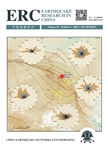The Present Status and Prospect of Earthquake Focal Depth Locating
The Present Status and Prospect of Earthquake Focal Depth Locating作者机构:Hubei Subsurface Multi-scale Imaging Key LaboratoryInstitute of Geophysics and GeomaticsChina University of Geosciences(Wuhan)Wuhan 430074China State Key Laboratory of Geodesy and GeodynamicsInstitute of Geodesy and GeophysicsChinese Academy of SciencesWuhan 430074China
出 版 物:《Earthquake Research in China》 (中国地震研究(英文版))
年 卷 期:2018年第32卷第3期
页 面:330-343页
核心收录:
学科分类:070801[理学-固体地球物理学] 07[理学] 0708[理学-地球物理学]
主 题:Focal depth relocating Arrival time locating Waveform modeling Depth phase Joint inversion
摘 要:Locating an earthquakes focal depth is always a key project in seismology. Precise focal depth is of critical importance for evaluating seismic hazards, deciphering dynamic mechanisms of earthquake generating,estimating aftershock evolutions and risk,as well as monitoring nuclear tests. However,how we determine an accurate focal depth is always a challenge in seismological studies. Aiming to solve these problems, we analyzed and summarized the present status and the future development of earthquake focal depth locating. In this paper we first reviewed the present status of focal depth locating in the world,and summarized the frequently-used relocating methods and ideas at present,and introduced two types of focal depth relocating ideas: arrival time relocating and waveform modeling methods. For these ideas,we systematically described the S-P and the Pn-Pg methods that belong to arrival time method,and polarization focal depth locating and amplitude focal depth locating that belongs to waveform modeling,and further analyzed the advantages and limitations of these methods. Since the depth phase methods are highly sensitive to focal depth,and are relatively free from the uncertainties of crustal models,we mainly reviewed the depth phases of s Pm P,s PL,s Pn,and s Sn,and quantitatively evaluated their availabilities and characteristics. Second,we also discussed the effects of crustal velocity models on the reliability of focal depth locating,and reviewed the advancements of seismic tomography techniques over recent years. Finally,based on the present status of the progress on the focal depth locating,and studies of seismic velocity structures,we proposed an idea of combining multiple datasets and relocating methods,jointly utilizing seismologic and geodetic techniques to relocate focal depth,which should be the major research field in investigating focal depth and source parameters in the near future.



